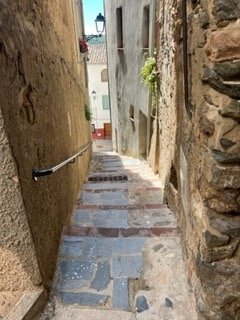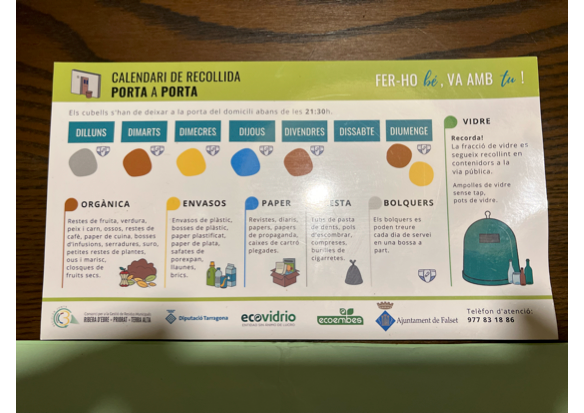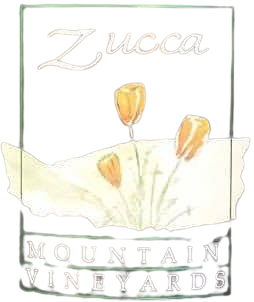Priorat II: Viella Baixa

Gary’s comments
Thinking about moving to the Priorat are and looking for a looking for a town we like. A lot has gone on since our last newsletter. We are still living in Valencia, but recently bought a house in Falset, a small village in the Montsant wine region east of Tarragona. The house is old, and we are going through a major remodel. I’ll have more on that in a later newsletter. Our second venture to the Priorat wine region was to the village of Viella Baixa (Low Village in Catalán), a very small village of about 200 people. We stayed in a nice two-story Airbnb with a wonderful view of the vineyards and cliffs in the background that you see in the image above.
The village
On our first trip in town we went to a small winery we found on Google Maps that was less than a mile away. We forgot that Google Maps doesn’t consider vertical when calculating walking time. While the winery was less than a mile away, it was also about 300 vertical feet down. The streets were narrow, as most are in small villages in Priorat, but these were steep! Also, when it’s raining, which it was, the streets take the runoff from the roofs and gully it down the street into the storm drains, so the streets are slick. We have both done enough rock climbing to know when we are safe and when we should rope up and set a belay. I felt like that being belayed might be a good idea, but the best we could do was use the walls for balance. Below is an image of one of the streets. This one has handrails, many don’t.

The wines
Our tour of the village took us to the Cellar Sabate winery, the only winery in town that we could find. The place was a delight. The wines were delicious and very fruit-forward, much like California wines. The winery was small, just a bit larger than ours, and even had much of the same type of winemaking equipment. The winery was established in 1910, and the current owner, Jaume Sabate, is the third generation winemaker. Jaume gave us a tour of the winery and even drove us and the wine we bought back up the hill to our apt. This kind act may have saved our lives; mine, Carol’s, and the wine’s.Below are some images of the wines and winery. Their wines probably aren’t available in the U.S., but here’s a link to the Cellar Sabate website.

What we learned from our trip
While the village was a delight, and the wines we drank and people that we met were delightful, we decided that Viella Baixa just wouldn’t work for us as a place to stay on a more permanent basis. There was no bus or train transportation, grocery store, or pharmacy, so we would need a car to get around. Also, most streets were too narrow to park, and there would be lots of walking on very steep streets. Maybe 10-20 years ago this would have worked, but not now. It was a beautiful place to visit, but not an option for a weekend or permanent place to live.
Odd Observations or Let’s Talk Trash
One of the fun things about living in a foreign country is learning about the different way they handle universal problems like traffic, law enforcement, and many other things. The thing that struck my interest was how different places handle trash. Most places in the U.S. have roadside pickup at each house or business. This system doesn’t work in cities like Valencia that have multi-story apartments, so they use bins by the sidewalk on almost every block. The colors of blue, yellow, gray, and brown mean the same as in the U.S. i.e., paper, plastic/tin, other, and compost. Below is a pic of the bins on our block taken from our balcony. The green domed bin on the opposite side of the street is for glass bottles and jars only. If you look closely you can see the same arrangement on the next block up.

The system in Viella Baixa and Falset works in the same general way, except the streets are too steep and narrow to put bins on. So they have hooks in the wall outside the doors to each house to hang your trash bags. Each type of trash has its separate color bag, and at night a guy comes by with a cart to pick them up. Below is an image of a handout with the days of the week on the top and the color bags that are picked up each night. And, it’s written in Catalan, of course.

